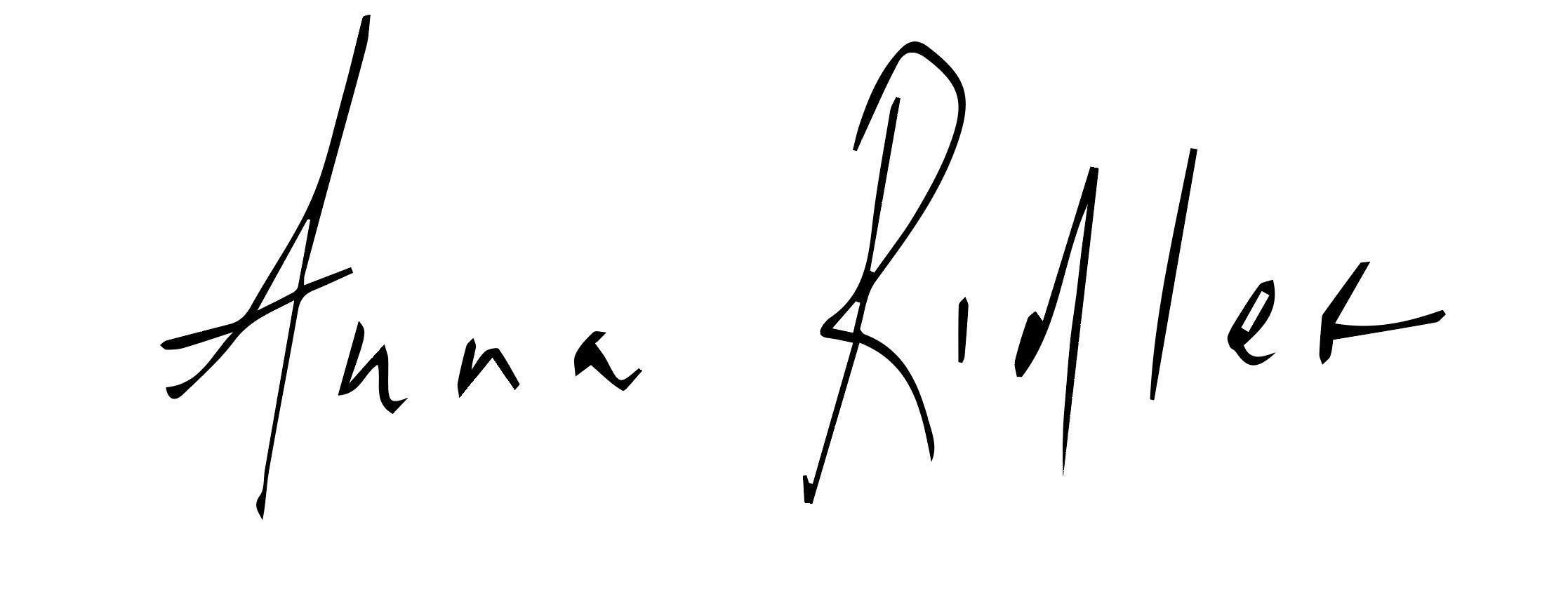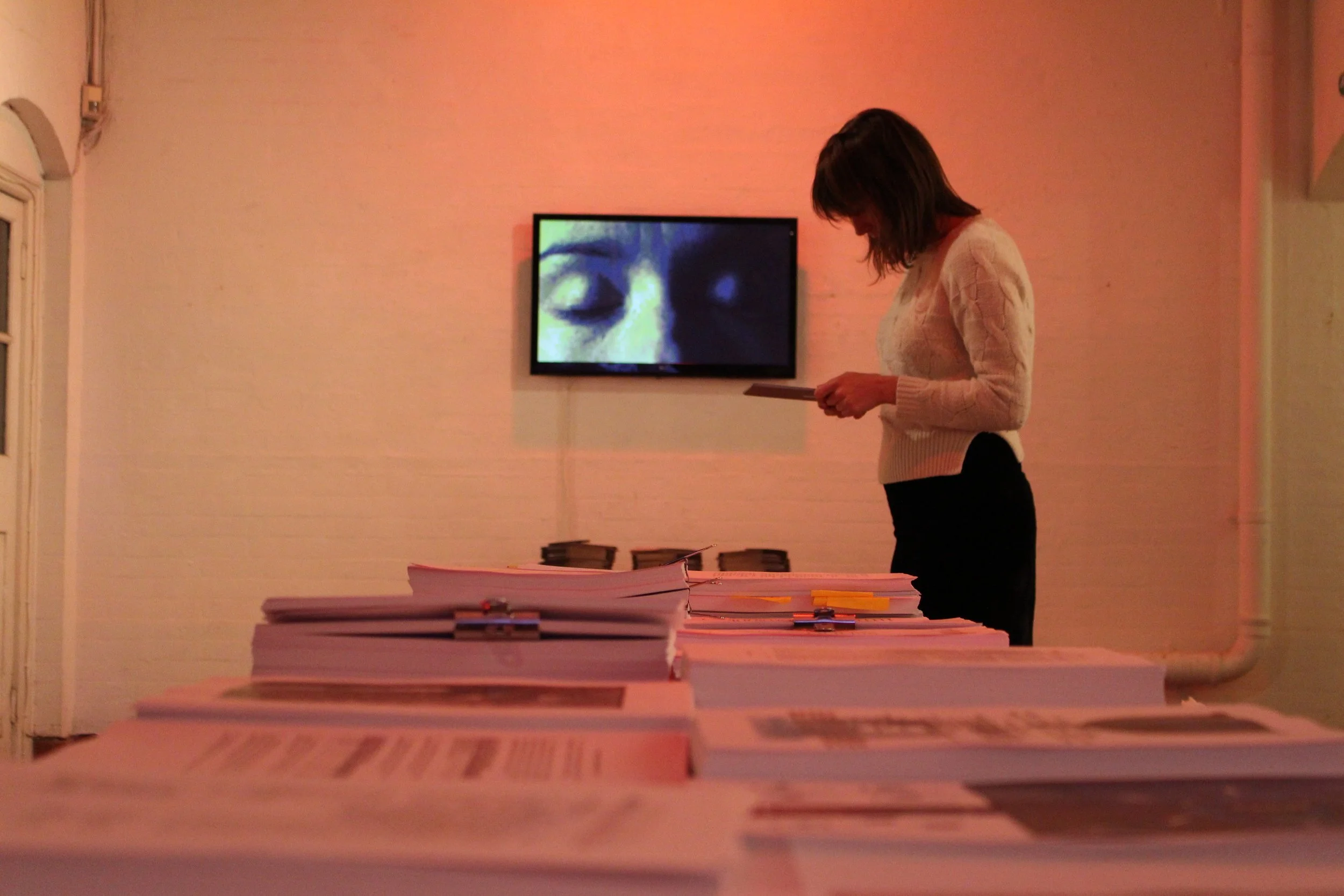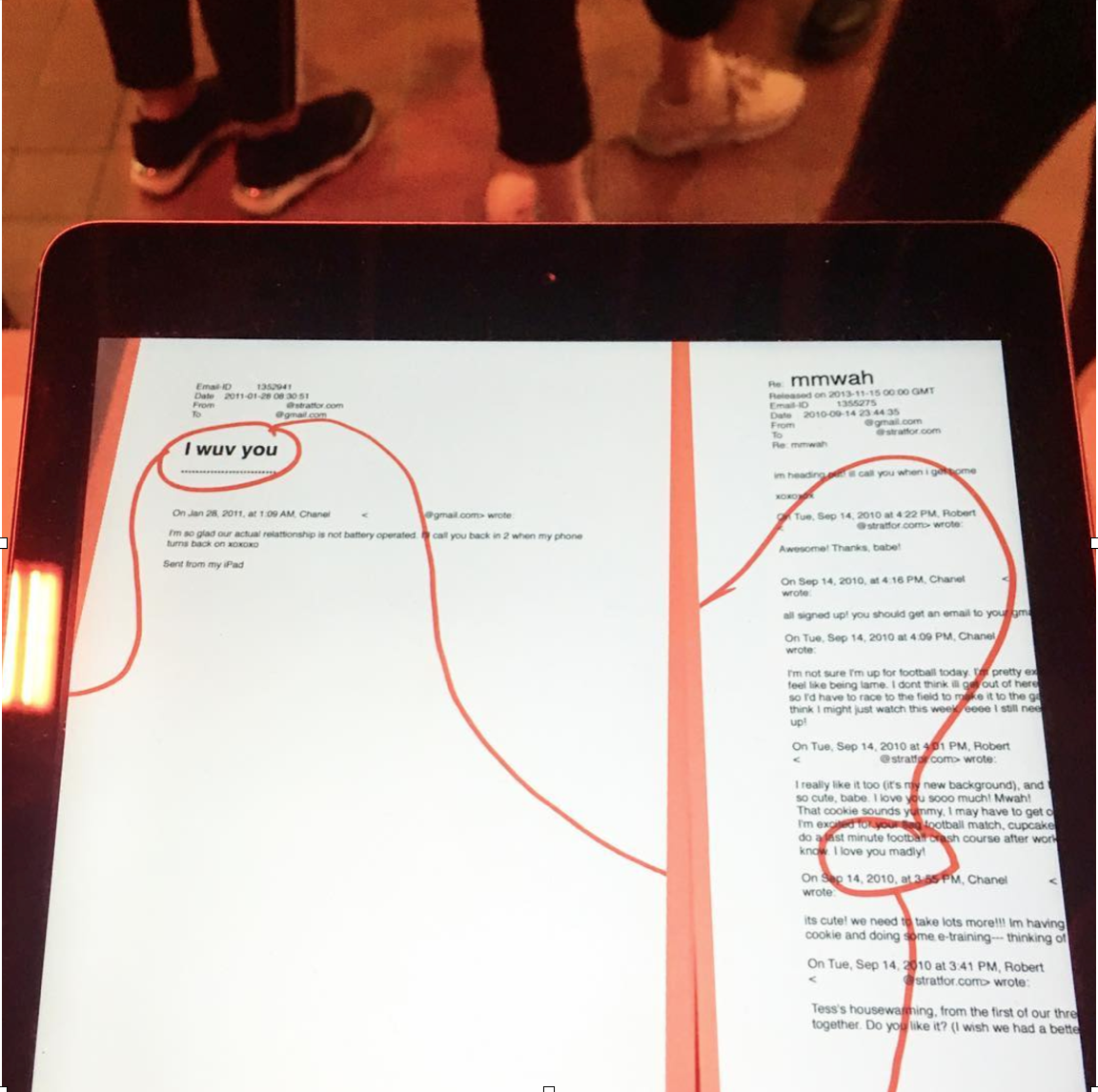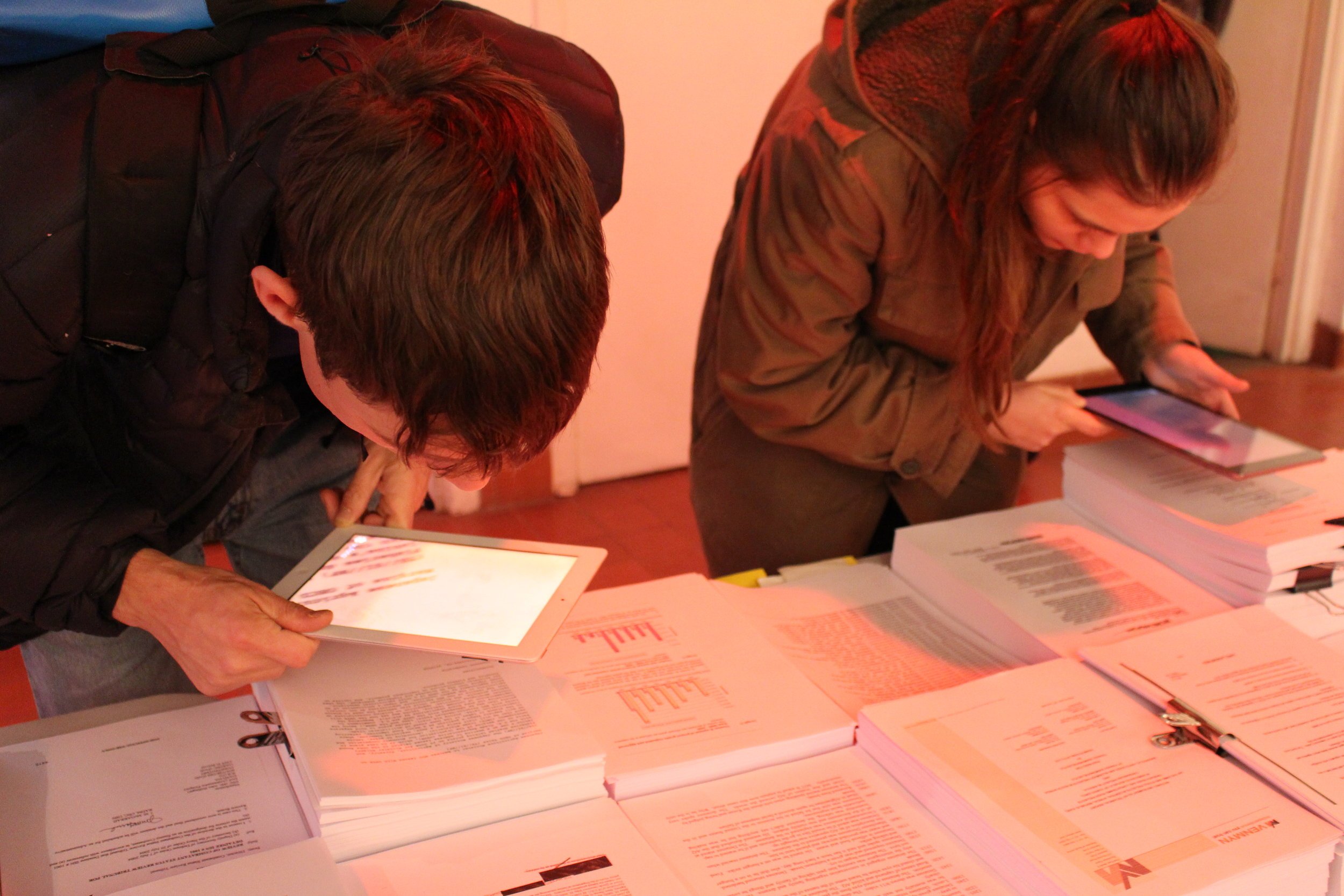Wikileaks: A Love Story, 2016
10,000 pages of printed Wikileaks documents, iPad, augmented reality application
Wikileaks: A Love Story (2016) is an interactive installation incorporating augmented reality. Scraping Wikileaks to find an unlikely story of love in the workplace, data from real emails between two people are used to construct tales of romance, falling in and out of love. Over 10,000 pages of documents from Wikileaks lay in stacks across a long table. The documents are viewed through an augmented reality app installed on an iPad to reveal their hidden stories that lie within lay in stacks.
Exhibited in Agency, NOME, Berlin, Germany (October 27 - December 7 2018). Sheffield Documentary Festival
Process & Research (2015 - 2017)
Wikileaks: Radical Transparency
This text formed part of the catalogue for the 'Spheres of Influence' exhibition in November 2016 and describes the background and process to building the Wikileaks: A Love Story Installation.
Wikileaks is a collection of documents comprised of secret information, news leaks, and classified media from anonymous sources. Founded in 2006, and managed by Julian Assange, whose story has become inextricably linked with it, its intention was to create a new kind of reporting, “scientific journalism”, where readers would be able to check the data that sat behind a story in the way that scientists peer review each others research. Information about the Afghanistan and Iraq war and Guantanamo Bay was leaked and turned into award winning stories by outlets such as New York Times and The Guardian. It was seen, as Slavoj Žižek writes, as a ‘good’ secret group attacking a ‘bad’ one (US State Department), upholding transparency and the right to know against the powerful and potentially corrupt.
However this view is becoming more and more nuanced. There is an enormous amount of information that sits in Wikileaks (over half a million files in the past year or so) organised into 37 rough databases. The website states it will only upload documents that are of “political, diplomatic or ethical significance” but huge amounts of personal and private information has also been published including details of sick children, rape victims and mental health patients. This is because only a small amount of information is read by moderators before being uploaded to the internet by the site in what is increasingly described as being “needlessly reckless and invasive” by a number of commentators. This “hostility to curation” means that for every top secret presentation, there are also hundreds of thousands of more personal, smaller, mundane, everyday stories that have been uploaded and published: HR complaints, gossip, shopping lists – hints of the lives of the people who work at government departments, who, for the most part, will be middle management or administration personnel. Wikileaks is a complex system, trying to balance freedom of information against the right to know. It criticises power without accountability yet through its own failure to address its curation system, perpetuates it, creating an inherent paradox.
This installation shows this collision of public and private that sits at the heart of the Wikileaks project. Stacks of printed paper – emails and documents and photographs – show the macro political machinations that most people assume are being revealed by the database. When an iPad is placed above the top of the papers a hidden narrative is revealed to the viewer, a deeply personal love story of a couple who fell in love and then broke up, all found in the emails that were released as part of a data-dump in 2013. The ipad allows the viewer to see the data and information being shifted and parsed before their eyes, before being constructed out of the mess that is the classification system of Wikileaks into a coherent, structured, easy to understand and universal narrative.
Curatorial text for AGENCY exhibition by Laura C. Marks
If you read through all of the spam emails in the Syria Files in Wikileaks you discover weird snippets of romance novels that appear, for no conceivable reason, in and amongst the rest of the message












